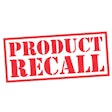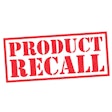
In less than two weeks, pet food companies with more than 500 employees must show compliance with the Current Good Manufacturing Practices (cGMPs) and Hazard Analysis and Preventive Controls for Food for Animals rule under the Food Safety Modernization Act, more commonly known as the FSMA animal feed preventive control rule.
While this is hardly an end point—larger pet food companies must continue to show compliance after the September 19 deadline, of course, with smaller companies (less than 500 employees) needing to comply by that date in 2017 and very small companies (less than US$2.5 million in annual sales) by 2018—it at least feels like a milestone on a long, strange journey for our industry that began nearly 10 years ago, with the mass melamine-related pet food recalls in 2007.
I can still remember first hearing the reports about dozens of pets becoming mysteriously ill, with some tragically dying. In very short order, the illnesses were tied to pet food products (most of them manufactured by the now defunct Menu Foods) and, specifically, one ingredient: contaminated wheat gluten imported from China. The already awful numbers turned into a horrific hundreds of pets and something like 60 million products recalled. And excruciatingly, it took a while for researchers and other experts to find the exact mechanism for how the melamine contaminant caused the pets’ illnesses and a way to treat at least some of them.
But what really sticks in my mind from that terrible time was the reaction by consumers, media and pet-related organizations. I think it’s fair to say that, until then, most pet food purchasers, even the most devoted pet parents, didn’t think much about where or how their pets’ food was made or what was in it. After all, consumers were just starting to think and ask about the same things with their own food and, generally, trusted manufacturers and marketers of both human and pet foods.
No longer, at least not with pet food. The 2007 recalls marked a watershed moment in how consumers viewed and interacted with not only pet food companies but also regulators and each other.
“The deadly impact of the 2007 pet food recalls that rocked the industry had repercussions seldom seen in the human-food world. While product recalls happen with reliable regularity there, people don’t abandon their supermarkets, swear off eating spinach forever or refuse to trust a package of chocolate chip cookie dough ever again,” wrote Jennifer Boncy in the September 2016 issue of Pet Business magazine. “On the other hand, the pet food recalls—and the pet deaths and illnesses that led to them—reverberated powerfully throughout the pet-loving population, putting consumers on edge and forever changing the game for pet food manufacturers and pet specialty retailers.”
Indeed, and rightly so. If the recalls were a wake-up call for many consumers, they were also a call to action for many pet food companies, who not only invested heavily in new safety and testing protocols but also launched new websites and awareness efforts to be as transparent as possible about their products and practices. Unfortunately, that was not the case for all pet food manufacturers, and even today, with FSMA looming large, there are probably still a handful who aren’t as up to speed as they should be. And more than a few who aren’t as transparent as today’s consumers demand.
FDA’s special focus on pet food
When the 2007 recalls happened, the Food and Drug Administration (FDA) struggled to keep up with all the calls and complaints from pet owners while also conducting its own investigation into the contaminated products. Meanwhile, several recall lists sprang up online, diligently updated and monitored by concerned pet lovers. Before long, they were joined or replaced by websites (including several started by people who had lost beloved pets to contaminated pet foods) claiming to hold the pet food industry accountable for its practices and products. Many of those sites still exist today.
And FDA officials and other regulatory bodies, such as the Association of American Feed Control Officials, still find themselves interacting directly with some of these pet owners and activists. That could be at least partially because the regulatory response to the recalls—as with anything related to regulations or regulatory agencies—has been excruciatingly slow. Though Congress passed legislation stemming from the recalls later that year, the FDA Amendments Act of 2007 (that was record time for US legislators), FDA has yet to develop or enact any meaningful regulations from it. Instead, FSMA, signed into law in January 2011, has taken precedent and nearly all of FDA’s focus and attention.
And pet food received a special type of attention. Soon after FSMA was signed into law, FDA declared a zero tolerance for Salmonella in pet food, despite that being nearly impossible to achieve. There are over 2,200 serotypes of Salmonella, and it’s essentially everywhere, in microscopic amounts. But even such an amount appearing in a pet food facility (not in the products) has prompted the manufacturer to issue a recall out of an abundance of caution—thus continuing the cycle of pet food recalls and the impression among some consumers that pet food is not safe. (In fact, pet food recalls typically add up to less than 20 within a year, while FDA’s food safety website lists more than twice that number for human food within the past two months.)
Ironically (or maybe consequently?), while FDA was developing this special focus on pet food, it was taking its time—several years—to write and release actual FSMA regulations. And, as late as August 24 of this year, less than a month before the animal feed preventive control rule takes effect, FDA finally released its guidance document for it. Let’s hope no larger pet food companies were waiting for that to guide the development or improvement of their cGMPs, HACCP, documentation or other required components.
With this and other FSMA regulations finally in place, the saga for pet food safety isn’t over, nor should it be. It should be a never-ending story and journey of continuous improvement, including transparency about pet food safety programs. The 2007 recalls opened the door to a whole new world for pet food makers and purchasers alike, and there’s no going back to the old world.

















